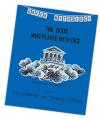There has been in the past terrible debate as to whether the mythical Troy actually had ever existed.
Troy is the setting for Homer’s Iliad and is the starting point of his second epic The Odyssey.
But for most of the scholars until the mid 19th century , Troy was merely a mythical city that most probably had never existed.
You can only imagine the thrill for all when in 1865-1868 Franck Calvert and then Heinrich Schliemann excavated several cities built in succession since the Bronze Age.
Troy is now 5 km from the Turkish coast but was once next to the sea, exactly as described by Homer. The site was situated in a bay created by the mouth of the river Skamanda and occupied a strategically important position between the Hittites, the Persians and the Greeks.
THE WELL- WALLED CITY
Homer describes Troy as ‘well-founded’, ‘strong-built’ and ‘well-walled’; there are also several references to fine battlements, towers and ‘high’ and ‘steep’ walls. The walls must have been unusually strong in order to withstand a ten-year siege and in fact, Troy fell only through the trickery of the Trojan Horse ruse.
It was said that the walls of Troy had been built by none the less than the gods Poseidon and Apollo who after a problem were punished by Zeus to serve the Trojan king Laomedon for a whole year.
The archaeological excavations have continued throughout the 20th century CE to the present day and they have revealed nine different cities.
Now it is now almost universally accepted that the archaeological excavations have revealed the city of Homer’s Iliad.
The archaeological site of Troy is listed by UNESCO as a World Heritage Site.

